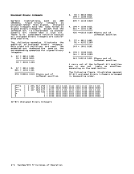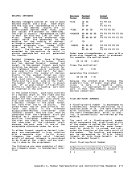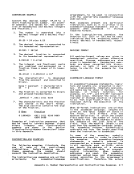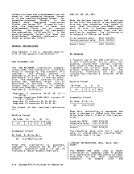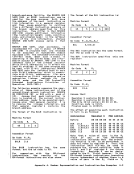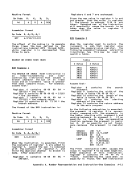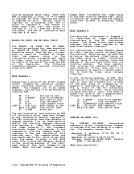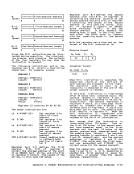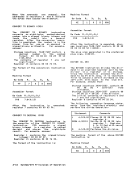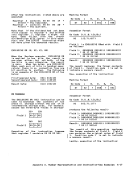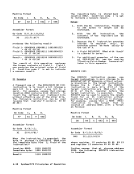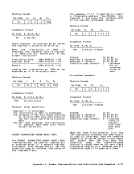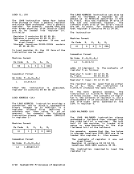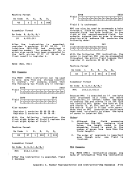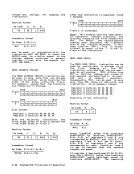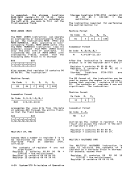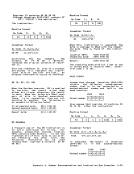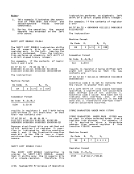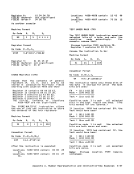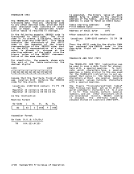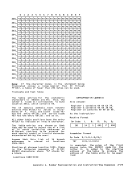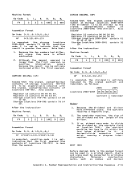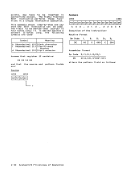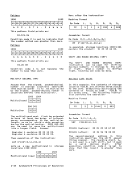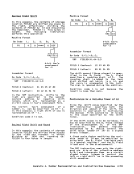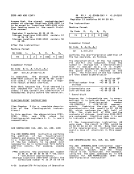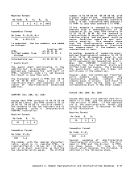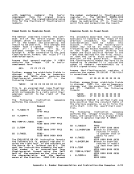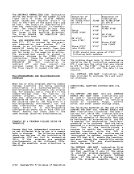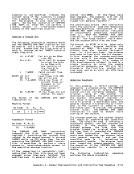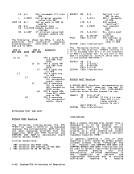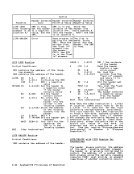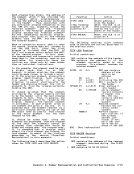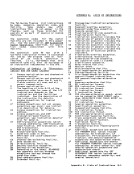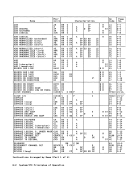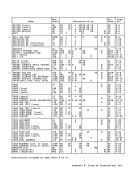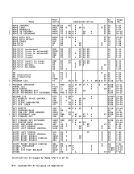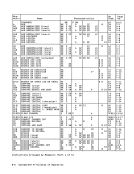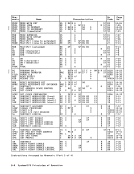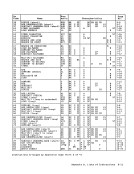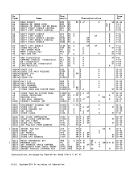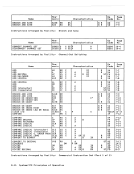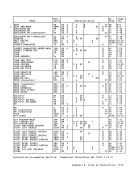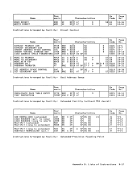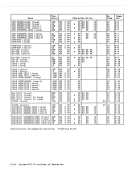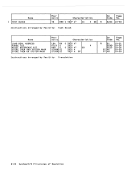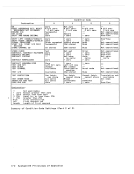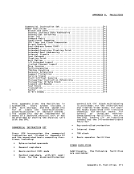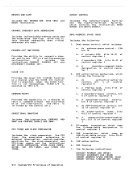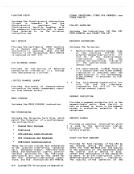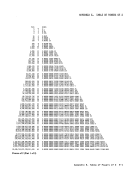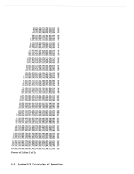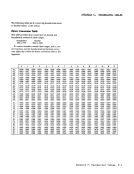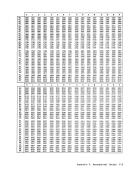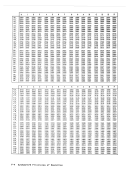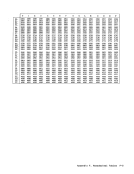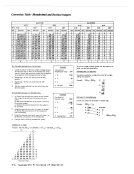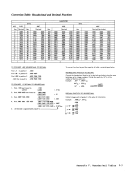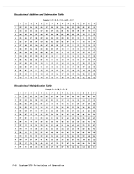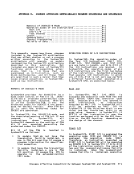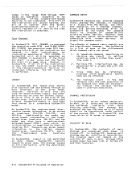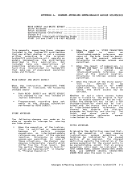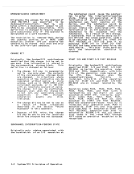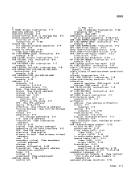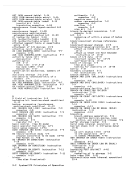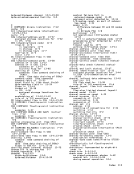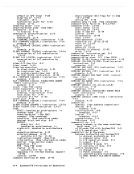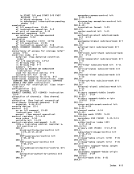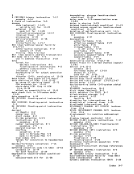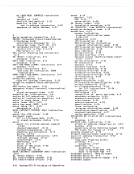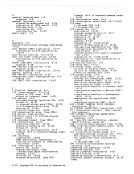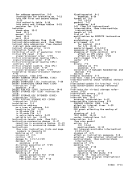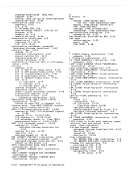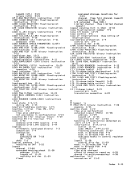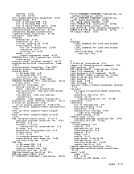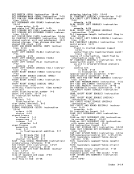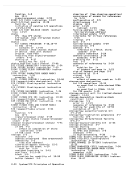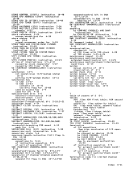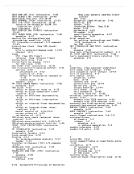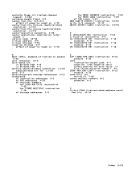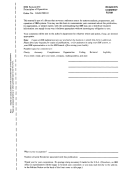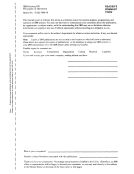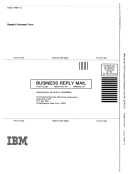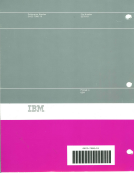An input/output device ordinarily is
attached to one control unit and is
accessible from one channel. Switching
equipment is available to make some
devices accessible to two or more chan
nels by switching devices between
control units and control units between
channels. The time required for switch
ing occurs during device-selection time
and may be ignored.CONTROL UNITS
A control unit provides the logical
capabilities necessary to operate and
control anI/O device and adapts the
characteristics of each device to the
standard form of control provided by the
channel.
The control unit accepts control signals
from the channel, controls the timing of
data transfer, and provides indications
concerning the status of the device.
TheI/O device attached to the control
unit may be designed to perform only
certain limited operations, or it may
perform many different operations. A
typical operation is moving the record
ing medium and recording data. To
accomplish these functions, the device
needs detailed signal sequences peculiar
to the type of device. The control unit
decodes the commands received from the
channel, interprets them for the partic
ular type of device, and provides the
signal sequence required for execution
of the operation.
A control unit may be housed separately,
or it may be physically and logically
integral with theI/O device or the CPU. In most electromechanical devices, a
well-defined interface exists between
the device and the control unit because
of the difference in the type of equip
ment the control unit and the device
contain. These electromechanical
devices often are of a type where only
one device of a group attached to a
control unit is required to transfer
data at a time (magnetic-tape units or
disk-access mechanisms, for example),
and the control unit is shared among a
number ofI/O devices. On the other
hand, in some electronicI/O devices
such as the channel-to-channel adapter,
the control unit does not have an iden
tity of its own.
From the programmer's point of view,
most functions performed by the control
unit can be merged with those performed
by theI/O device. Therefore, this
publication normally does not make
specific mention of the control-unit
function; the execution ofI/O oper
ations is described as if theI/O devices communicated directly with the
channel. Reference is made to the
control unit only when emphasizing a
function performed by it or when
describing how sharing of the control
unit among a number of devices affects
the execution ofI/O operations. CHANNELS A channel directs the flow of informa
tion betweenI/O devices and main stor
age. It relieves theCPU of the task of
communicating directly with the devices
and permits data processing to proceed
concurrently withI/O operations.
A channel provides a means for connect
ing various types ofI/O devices to the CPU and to storage. The channel accepts
control information from theCPU in the
format supplied by the program and
changes it into a sequence of signals
acceptable to a control unit and device.
Similarly, when anI/O device provides
signals that should be brought to the
attention of the program, the channel
transforms the signals to information
that can be used in the cpu.
A channel contains facilities for the
control ofI/O operations. During
execution of anI/O operation involving
data transfer, the channel assembles or
disassembles data and synchronizes the
transfer of data bytes with storage
cycles. To accomplish this, the channel
maintains and updates an address and a
count that describe the destination or
source of data in storage. When the
channel facilities are provided in the
form of separate autonomous equipment
designed specifically to controlI/O devices, I/O operations are completely
overlapped with the activity in theCPU. The only storage cycles required during I/O operations in such channels are
those needed to transfer data and
control information to or from the final
locations in storage. These cycles do
not delay theCPU program, except when
both theCPU and the channel concurrent
ly attempt to refer to the same storage
area.
If separate equipment is not provided,
facilities of theCPU are used for
controllingI/O devices. When the CPU and channels, or the CPU, channels, and
control units, share common facilities,I/O operations cause interference to the CPU, varying in intensity from occa
sional delay of aCPU cycle to a
complete lockout ofCPU activity. The
intensity depends on the extent of shar
ing and on theI/O data rate. The
sharing of the facilities, however, is
accomplished automatically, and the
program is not affected byCPU delays,
except for an increase in execution
time.Chapter 13. Input/Output Operations 13-3
attached to one control unit and is
accessible from one channel. Switching
equipment is available to make some
devices accessible to two or more chan
nels by switching devices between
control units and control units between
channels. The time required for switch
ing occurs during device-selection time
and may be ignored.
A control unit provides the logical
capabilities necessary to operate and
control an
characteristics of each device to the
standard form of control provided by the
channel.
The control unit accepts control signals
from the channel, controls the timing of
data transfer, and provides indications
concerning the status of the device.
The
unit may be designed to perform only
certain limited operations, or it may
perform many different operations. A
typical operation is moving the record
ing medium and recording data. To
accomplish these functions, the device
needs detailed signal sequences peculiar
to the type of device. The control unit
decodes the commands received from the
channel, interprets them for the partic
ular type of device, and provides the
signal sequence required for execution
of the operation.
A control unit may be housed separately,
or it may be physically and logically
integral with the
well-defined interface exists between
the device and the control unit because
of the difference in the type of equip
ment the control unit and the device
contain. These electromechanical
devices often are of a type where only
one device of a group attached to a
control unit is required to transfer
data at a time (magnetic-tape units or
disk-access mechanisms, for example),
and the control unit is shared among a
number of
hand, in some electronic
such as the channel-to-channel adapter,
the control unit does not have an iden
tity of its own.
From the programmer's point of view,
most functions performed by the control
unit can be merged with those performed
by the
publication normally does not make
specific mention of the control-unit
function; the execution of
ations is described as if the
channel. Reference is made to the
control unit only when emphasizing a
function performed by it or when
describing how sharing of the control
unit among a number of devices affects
the execution of
tion between
age. It relieves the
communicating directly with the devices
and permits data processing to proceed
concurrently with
A channel provides a means for connect
ing various types of
control information from the
format supplied by the program and
changes it into a sequence of signals
acceptable to a control unit and device.
Similarly, when an
signals that should be brought to the
attention of the program, the channel
transforms the signals to information
that can be used in the cpu.
A channel contains facilities for the
control of
execution of an
data transfer, the channel assembles or
disassembles data and synchronizes the
transfer of data bytes with storage
cycles. To accomplish this, the channel
maintains and updates an address and a
count that describe the destination or
source of data in storage. When the
channel facilities are provided in the
form of separate autonomous equipment
designed specifically to control
overlapped with the activity in the
those needed to transfer data and
control information to or from the final
locations in storage. These cycles do
not delay the
both the
ly attempt to refer to the same storage
area.
If separate equipment is not provided,
facilities of the
controlling
control units, share common facilities,
sional delay of a
complete lockout of
intensity depends on the extent of shar
ing and on the
sharing of the facilities, however, is
accomplished automatically, and the
program is not affected by
except for an increase in execution
time.
























































































































































































































































































































































































































































